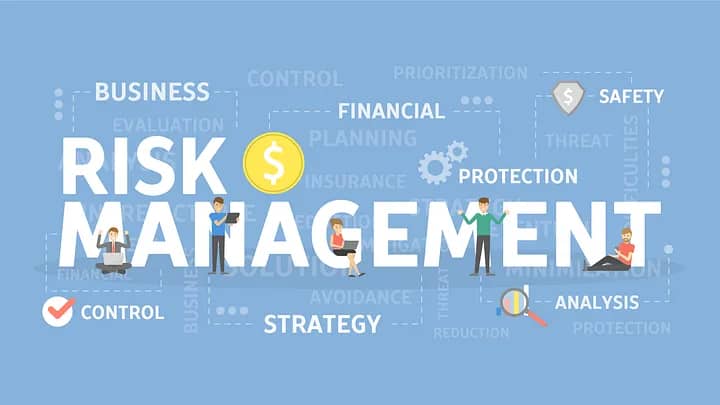Risk management is a vital part of any business, organization, or even personal projects. According to a study by the Project Management Institute, 57% of organizations do not have a defined risk management strategy, leading to potential crises. A good risk management plan can mean the difference between success and failure. However, things don’t always go as planned. Have you ever wondered how it all can go wrong?
In this post, we will dive deep into ten real-life examples where risk management failed spectacularly, resulting in financial losses, environmental disasters, and more. How can we learn from these mistakes to avoid repeating them?
What is Risk Management?

Risk management involves identifying, analyzing, and responding to potential risks that could hinder an organization’s objectives. It is like playing chess; you anticipate your opponent’s moves and strategize accordingly. Despite its importance, many organizations fall short, and the consequences can be significant.
Importance of Risk Management
- Financial Stability: Businesses can protect their bottom line by managing risks effectively.
- Reputation Protection: Proactive measures help safeguard an organization’s image.
- Operational Efficiency: Streamlined processes minimize vulnerabilities.
1. The Titanic: A Historic Miscalculation
In 1912, the RMS Titanic was deemed “unsinkable.” This assertion stemmed from extensive design features showcasing what was considered foolproof risk management. However, insufficient lifeboats and ignored ice warnings led to the tragic sinking, resulting in over 1,500 lost lives.
> “The Titanic disaster exemplifies that overconfidence in risk management can lead to catastrophic outcomes.” — Dr. Claire L. Dunn, Maritime Risk Expert.
2. Chernobyl Nuclear Disaster
In April 1986, the Chernobyl nuclear power plant in Ukraine suffered a catastrophic explosion due to previously identified risks being overlooked. The disaster led to widespread radioactive contamination and numerous health issues, with costs amounting to over $600 billion in damages and infrastructure loss.
Impact: Increased cancer cases and displacement of over 400,000 individuals.
“Chernobyl remains a stark reminder that proper risk assessment can save lives.” — Dr. Yury Gagarin, Nucl. Safety Specialist.
3. BP Oil Spill
In 2010, BP’s Deepwater Horizon oil rig experienced a blowout, resulting in the largest marine oil spill in history. The initial risk management assessments had serious gaps, contributing to the release of nearly 5 million barrels of crude oil into the Gulf of Mexico, causing devastating environmental effects and costing BP over $65 billion.
- Environmental Impact: Long-term damage to marine ecosystems and wildlife.
[Environmental Protection Agency](https://www.epa.gov).
4. Kraft Heinz Company: A Souring Food Giant
Kraft Heinz faced significant losses in 2019, amounting to $15 billion, due to its failure to adapt to market trends. Despite recognizing the urgency for innovation, the company failed to implement effective risk management practices, leading to a deteriorating product line.
- Points: Market analysis ignored; no crisis plan in place.
- Facts:Sales dropped by 4% a year post-acquisitio.
5. Noble Roman’s Restaurant Chain
Noble Roman’s faced significant risks in its transition from a restaurant chain to a franchise model. The company failed to forecast market responses and struggled financially, causing it to close many locations.
Consequence: Bankruptcy filing in 2010.
“Without proper risk assessments, businesses can inadvertently steer into murky waters.” — Dan Simmons, Business Analyst.
6. Volkswagen Emissions Scandal
In 2015, Volkswagen was caught using software to cheat emissions tests. This infraction sprung from a misguided drive to dominate the clean vehicle market without sufficient risk management measures, resulting in fines exceeding $30 billion.
Summary: Reputation damaged; lawsuits increased.
Fact: Lost customer trust caused an 18% drop in stock prices.
7. Blockbuster’s Downfall
Blockbuster’s neglect in addressing the digital age’s emergence was a significant misstep in risk management. Their failure to recognize the potential threat posed by Netflix and streaming services led to bankruptcy in 2010.
Conclusion: Ignored industry trends.
Statistics: Blockbuster stock fell 96% over a decade.
8. Space Shuttle Challenger Disaster
In 1986, the Challenger space shuttle tragically exploded shortly after launch due to faulty O-rings—a risk long known yet ignored by engineers and management. This failure led to the loss of all seven crew members.
Result: Regulatory changes in NASA’s risk management.
“The Challenger disaster highlighted the need for rigorous assessment and oversight.” — NASA Risk Assessment Office.
9. Meltdown of Lehman Brothers
The collapse of Lehman Brothers in 2008 illustrated a catastrophic lapse in risk management within financial institutions leading up to the global financial crisis. Failing to assess risk properly resulted in over $600 billion in losses, impacting economies globally.
Consequence: Triggered the Great Recession.
Fact: Unchecked risk-taking led to massive bailouts by governments.
10. Firestone Tires and Ford Explorer
The tire blowouts on Firestone tires used on Ford Explorers in the late 1990s resulted in numerous fatalities. Despite previous complaints and warnings, the companies delayed proper risk assessments, leading to over 200 deaths and major recalls.
Outcome: Affected both companies’ reputations.
Industry Impact: Regulatory scrutiny increased for tire safety.
Lessons Learned: Why Risk Management Matters
Emphasizing the importance of efficient risk management can help us avoid slipping into the patterns that caused the failures mentioned above.
- Be Proactive: Regularly assess risks in both growth and crisis situations.
- Open Communication: Encourage team members to report potential concerns.
- Adapt to Change: Technologies and market trends are always evolving—so should your risk strategies.
FAQs
Q1. What is Risk Management?
A: Risk management is the process of identifying, assessing, and prioritizing risks followed by coordinated efforts to minimize the impact of unfortunate events.
Q2. Why is Risk Management Important?
A: Effective risk management protects resources, enhances decision-making, and prevents costly mistakes.
Q3. Can Small Businesses Benefit from Risk Management?
A: Absolutely! Every size enterprise can improve its stability and success with a sound risk management approach.
Understanding these ten real-life examples, we can see how ignoring risk management or implementing ineffective strategies can have dire consequences. From the Titanic to modern corporate failures, risk management provides a bulwark against chaos.
As we look to the future, we must ponder: Are we truly learning from these failures and fortifying our own risk management strategies? The answer to this question may dictate the success of future endeavors. Remember, effective risk management is more than just avoiding pitfalls; it’s about embracing opportunities while navigating potential challenges safely.
SOURCES:
– Project Management Institute: [PMI Publications](https://www.pmi.org)
– Environmental Protection Agency: [EPA](https://www.epa.gov)
– Financial Times: [Lehman Brothers Collapse](https://www.ft.com)
By reflecting carefully on historical events, we not only enhance our understanding of the past but also ensure a better, safer future. Let’s take these lessons to heart!









rhdnoc
rijfym
xcbike
5msi45
24cvze
9o16or
umyvql